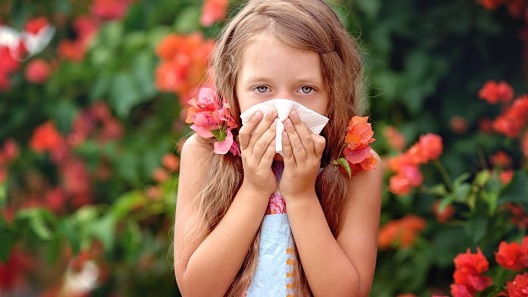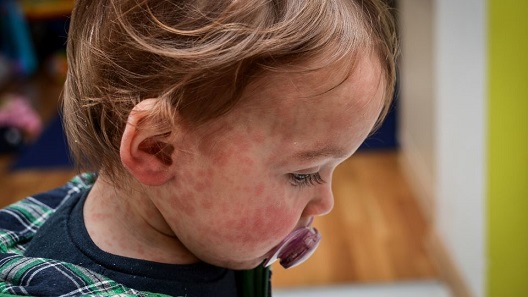Sponsored Content Mar 24, 2023 2 years, 1 month, 2 weeks, 6 days, 2 hours, 32 minutes ago
Allergies are common concerns for parents. Allergies occur when the immune system overreacts to substances in the environment. This article will discuss children's allergies, causes, symptoms, and treatment options.

A study conducted by
The Journal of Allergy and Clinical Immunology found that in children aged between 6 and 12, the prevalence of allergic rhinitis was 44%, asthma was 10%, and atopic dermatitis was 20%. In the older group (12-18 years), the prevalence of AR was 48.4%, asthma was 6%, and atopic dermatitis was 24%. The prevalence of food allergy was 8% in the younger group and 11% in the older group.
In both groups, respiratory allergies (AR and asthma) were significantly associated with a family history of atopy. In contrast, the older group also had a significant association with current smoking and household pets.
The study findings indicate a high prevalence of allergic diseases and highlight the urgent need to raise public awareness and appropriately manage these conditions. The significant correlation between smoking and pets in the older group suggests longer exposure may lead to sensitisation.
What Causes Allergies In Children?
Various factors, including genetics, environmental factors, and lifestyle choices, can cause allergies. Some children may be predisposed to developing allergies due to a family history of allergies. Environmental factors such as pollution and exposure to pollen or dust can increase the risk of developing allergies. Lifestyle choices such as a diet high in processed foods or a lack of physical activity can contribute to developing allergies.
Common Types Of Allergies In Children
Allergies can manifest in various ways, but the most common types of allergies in children are food allergies, allergic rhinitis (hay fever), and atopic dermatitis (eczema). Food allergies occur when the immune system overreacts to certain foods such as peanuts, tree nuts, milk, eggs, and shellfish. Symptoms of food allergies can range from mild, such as hives, to severe, such as anaphylaxis, a life-threatening allergic reaction.
Allergic rhinitis is a condition that causes inflammation of the nose and sinuses in response to allergens such as pollen, dust, and mould. Symptoms of allergic rhinitis include a runny nose, sneezing, and congestion.
Atopic dermatitis is a type of eczema that affects the skin. It is often characterised by red, itchy patches on the skin and can be caused by environmental factors such as pollen, dust, and mould.
Symptoms Of Allergies In Children
The symptoms of allergies in children vary depending on the type of allergy and its severity. Common food allergy symptoms include hives, lips, tongue, or throat swelling, abdominal pain, vomiting, and difficulty breathing. Symptoms of allergic rhinitis include a runny nose, sneezing, congestion, and itchy eyes. Atopic dermatitis symptoms include red itchy patches on the skin.
 Treatment Options For Allergies In Children
Treatment Options For Allergies In Children
Treatment options for allergies in children vary depending on the type of allergy and the severi
ty of the reaction. Mild cases of allergies can be treated with over-the-counter medications such as antihistamines, nasal sprays, and eye drops. In more severe cases, prescription medications such as corticosteroids may be necessary to control symptoms.
In food allergies, the best treatment is to avoid the allergen altogether. Parents of children with food allergies should be aware of their child's allergies and read food labels carefully. If a child accidentally ingests a food they are allergic to, epinephrine (adrenaline) may be necessary to prevent a life-threatening reaction.
Preventing Allergies In Children
Prevention is key when it comes to allergies in children. While it may not be possible to prevent allergies completely, there are steps parents can take to reduce their child's risk of developing allergies.
If you are a parent or caregiver of a child with allergies, you must have the necessary skills and knowledge to respond appropriately in an emergency. Booking a
first aid, asthma and anaphylaxis course with
First Aid Pro will equip you with the skills to provide prompt and effective care in case of an allergic reaction.
This training covers various topics, including recognising and managing anaphylaxis, administering adrenaline, and identifying and managing asthma symptoms. By taking this course, you will be better equipped to recognise the signs of an allergic reaction and take appropriate action, potentially saving a child's life.
Book a first aid course today to ensure your child is in the best hands.

